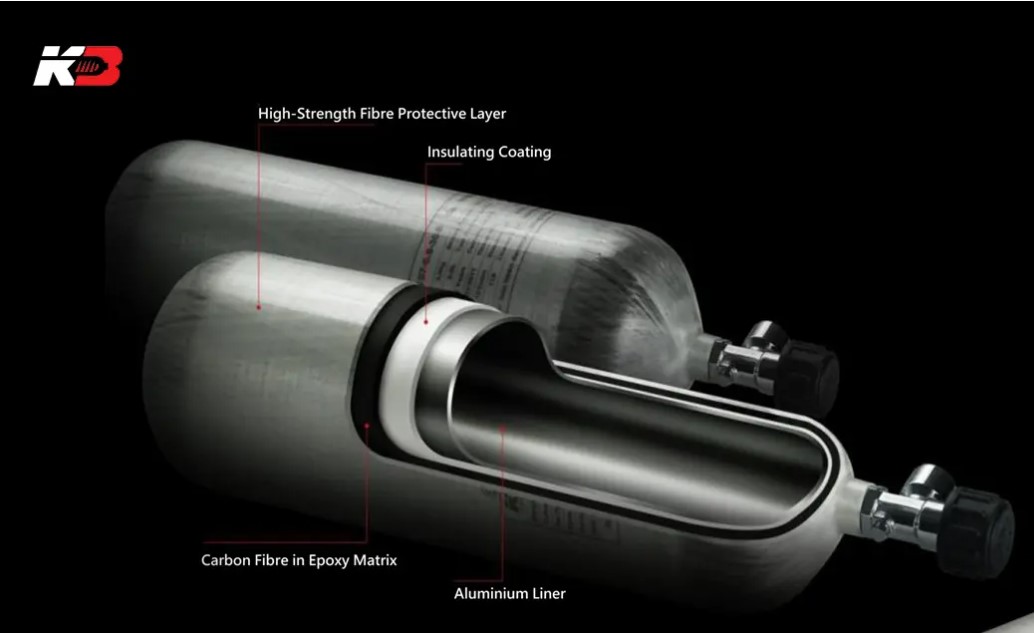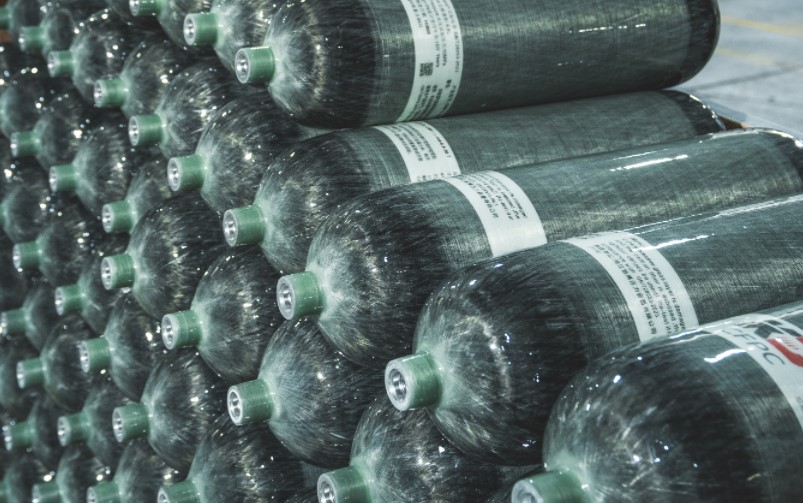Oxygen cylinders are a critical component in many fields, from medical care and emergency services to firefighting and diving. As technology advances, so do the materials and methods used to create these cylinders, leading to the development of different types that offer various benefits. One of the most significant innovations in this area is the Type 3 oxygen cylinder. In this article, we’ll explore what a Type 3 oxygen cylinder is, how it differs from other types, and why its construction from carbon fiber composites makes it a superior choice in many applications.
What is a Type 3 Oxygen Cylinder?
A Type 3 oxygen cylinder is a modern, high-performance cylinder designed to store compressed oxygen or air at high pressure. Unlike traditional steel or aluminum cylinders, Type 3 cylinders are made using advanced composite materials that significantly reduce their weight while maintaining or even enhancing their strength and durability.
Key Characteristics of Type 3 Cylinders:
- Composite Construction: The defining feature of a Type 3 cylinder is its construction from a combination of materials. The cylinder typically has an aluminum or steel liner, which is wrapped with carbon fiber composite. This combination provides a balance of lightweight properties and structural integrity.
- Lightweight: One of the most notable advantages of Type 3 cylinders is their reduced weight. These cylinders are up to 60% lighter than traditional steel or aluminum cylinders. This makes them much easier to transport and handle, especially in situations where mobility is critical.
- High Pressure Capability: Type 3 cylinders can safely store gases at higher pressures, typically up to 300 bar (about 4,350 psi). This allows for a greater volume of gas to be stored in a smaller, lighter cylinder, which is particularly useful in applications where space and weight are at a premium.
The Role of Carbon Fiber Composites
The use of carbon fiber composites in the construction of Type 3 cylinders is a major factor in their superior performance. Carbon fiber is a material known for its exceptional strength-to-weight ratio, which means it can provide significant strength without adding much weight.
Advantages of Carbon Fiber Composite Cylinders:
- Strength and Durability: Carbon fiber is incredibly strong, allowing it to withstand the high pressures required for storing compressed gases. This strength also contributes to the cylinder’s durability, making it resistant to impacts and wear over time.
- Corrosion Resistance: Unlike steel, carbon fiber does not corrode. This makes Type 3 cylinders more resilient in harsh environments, such as marine or industrial settings where exposure to moisture and chemicals could cause traditional cylinders to degrade.
- Weight Reduction: The primary benefit of using carbon fiber in these cylinders is the significant reduction in weight. This is particularly important in applications where the cylinder needs to be carried or moved frequently, such as in firefighting, emergency medical services, or scuba diving.
Applications of Type 3 Oxygen Cylinders
The benefits of Type 3 oxygen cylinders make them ideal for a wide range of applications where traditional steel or aluminum cylinders might be too heavy or bulky.
Medical Use:
- In medical settings, particularly for portable oxygen systems, the lightweight nature of Type 3 cylinders allows patients to carry their oxygen supply more easily. This improves mobility and quality of life for those who rely on supplemental oxygen.
- Emergency responders also benefit from using Type 3 cylinders, as they can carry more equipment without being weighed down, which is crucial when every second counts.
SCBA (Self-Contained Breathing Apparatus):
- Firefighters and rescue workers use SCBA systems to protect themselves in hazardous environments, such as burning buildings or areas with toxic fumes. The lighter weight of Type 3 cylinders reduces fatigue and increases the range and duration of their operations, enhancing safety and efficiency.
SCUBA Diving:
- For scuba divers, the reduced weight of a Type 3 cylinder means less effort is required both above and below the water. Divers can carry more air with less bulk, extending their dive time and reducing strain.
Industrial Use:
- In industrial settings, where workers might need to wear breathing apparatuses for extended periods, the lighter weight of Type 3 cylinders makes it easier to move around and perform tasks without being encumbered by heavy equipment.
Comparison with Other Cylinder Types
To fully understand the advantages of Type 3 cylinders, it’s helpful to compare them with other common types, such as Type 1 and Type 2 cylinders.
Type 1 Cylinders:
- Made entirely of steel or aluminum, Type 1 cylinders are strong and durable but are significantly heavier than composite cylinders. They are often used in stationary applications where weight is less of a concern.
Type 2 Cylinders:
- Type 2 cylinders have a steel or aluminum liner, similar to Type 3, but are only partially wrapped with a composite material, usually fiberglass. While lighter than Type 1 cylinders, they are still heavier than Type 3 cylinders and offer lower pressure ratings.
- As discussed, Type 3 cylinders provide the best balance of weight, strength, and pressure capability. Their full carbon fiber wrap allows for the highest pressure ratings and the greatest reduction in weight, making them the preferred choice for many portable and demanding applications.
Conclusion
Type 3 oxygen cylinders represent a significant advancement in the design and manufacture of high-pressure gas storage systems. Their lightweight and durable construction, made possible by the use of carbon fiber composites, makes them ideal for a wide range of applications, from medical and emergency services to industrial use and scuba diving. The ability to store more gas at higher pressures in a lighter package means that users can benefit from increased mobility, reduced fatigue, and enhanced safety. As technology continues to evolve, the role of Type 3 cylinders is likely to expand even further, offering even greater benefits across various fields.
Post time: Aug-19-2024


